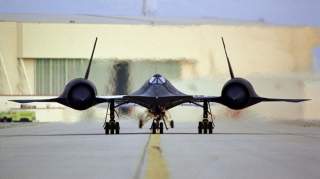The SR-71 Blackbird: The Super Spy Plane That Outran Missiles
It might be retired, but it’s still the fastest plane on the planet.
Blackbirds also flew recon missions off the Russian coast—though not over Russia itself—evading all of the Mach 3 MiG-25 fighters sent after them. Soviet defector Victor Belenko wrote in his biography MiG Pilot, “They taunted and toyed with the MiG-25s sent up to intercept them, scooting up to altitudes the Soviet planes could not reach, and circling leisurely above them or dashing off at speeds the Russians could not match.”
Yet the Blackbird had shortcomings. It was expensive to operate, costing more than $100,000 per hour flown according to one estimate. Furthermore, an SR-71 required an average of a week of maintenance between each mission because the high-speed flights often caused bits and pieces of the airplane to loosen or come off. The Air Force was also worried that new Soviet SA-5 surface-to-air missiles had the speed and range to hit it.
Most importantly, spy satellites and drones could handle the strategic missions that the SR-71 was supposed to perform. And the Blackbird, which relied on 1960s technology, had no datalink to transmit its intelligence data back to base, so it was not considered ideal for providing data in a time-sensitive manner.
The End of an Era:
The SR-71 was first retired in 1989, before three airframes were brought back into service in 1994. However, the operating costs of the small fleet were extremely high. Despite attempts by politicians like Senator John Glenn to save the program, the Air Force wanted to redirect funding to other projects, and the SR-71 was finally withdrawn from service in 1998. NASA’s two Blackbirds were retired the following year.
For years, there were rumors of an even faster spy plane, the Aurora, but its existence seems unlikely at this point. Rather, the Pentagon relies on drones and satellites if it needs to cast an eye on a well-defended location. Why risk lives and diplomatic incidents using manned aircraft? The still-classified RQ-180 Global Hawk stealth drone currently in development is believed to be the effective successor of the Blackbird.
What about gathering intel over places where there is no threat from surface-to-air missiles? Then the Air Force can call upon the venerable 1950’s era U-2—which in heavily upgraded form, is now flying photo reconnaissance missions over Iraq, having outlasted its successor by two decades and counting.
Nonetheless, it looks like the Blackbird will remain the queen of speed for some time to come.
Sébastien Roblin holds a Master’s Degree in Conflict Resolution from Georgetown University and served as a university instructor for the Peace Corps in China. He has also worked in education, editing, and refugee resettlement in France and the United States. He currently writes on security and military history for War Is Boring.
Image: A NASA Lockheed SR-71A taxiing on the ramp at NASA's Dryden Flight Research Center, Edwards, California. Wikimedia Commons/Public domain

